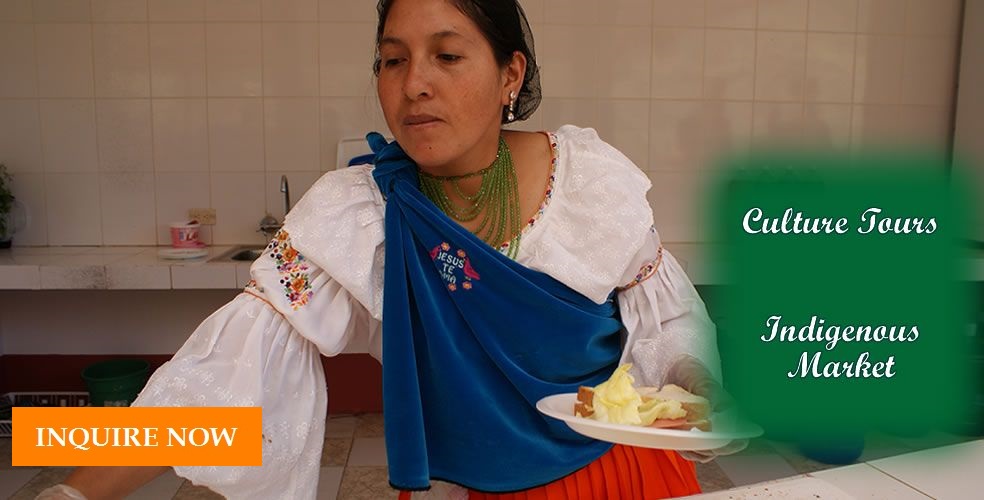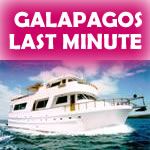Ecuador Travel Information

With this relatively small territory (256.370 km2), Ecuador has the biggest biodiversity per area in the world!. In a recent study of the conservation International, Ecuador is among the 17 "megadiverse" countries, with 9.2 species per km2, occupies the first place in the world with regards to species per area.\The richness of this country lies on it's diversity, both natural and cultural.
Ecuador has 4 diverse, and rich regions: the Amazon Rain forest,the Coast, the highland Andes and the Galapagos Archipielago. These four regions are subdivided into 24 provinces. Besides, its exuberant biodiversity, Ecuador embraces an impressive variety of ethnic groups, including some untouched communities which still preserve traditional values and customs from ancient times.
LANGUAJE
Spanish.Most of the indigenous population speaks Quichua. English is spoken in hotels, tourist shops and in major visitor centers where sometimes is possible to find people speaking French and German.
RELIGION
95% Catholics holics.CURRENCY
Dollars. The government has produced series of local coins of 1,5,10,25 and 50 cents, that have the same value as the American coins (which are also accepted). Banks open from 9 to 5pm and on Saturdays only half day. Money exchange offered every day in main hotels.
GOVERNMENT
Democratic. Current President is Rafael CorreaBOUNDARIES
Colombia borders Ecuador on the north, Peru on the south and east, and the Pacific Ocean has an extension of nearly 800 km on the west
ISLANDS
The Galapagos Islands(Approximately 8,000 km2) consist of 13 principal islands, 6 small islands and 42 islets.
HIGHEST ALTITUDES
Chimborazo rises 6,310 meters above sea level and Cotopaxi, the highest active volcano in the world is 5,897 meters above sea level.
DOCUMENTS
Upon arrival in the country, all foreigners must present a passport and a visa certified by an accredited Ecuadorian consul in the country of origin. It is a good idea to carry your passport or a copy of it, because there are regular checkpoints at different places in the country.
CLIMATE
Although Ecuador belongs to the tropic zone, the great differences that exist in altitude result in varying temperatures in different regions. The average temperature on the coast is 27o C. The sierra has a subtropical climate with temperatures varying between 3oC and 25oC. In the Amazon region, the climate is warm and humid with temperatures varying between 23oC and 26oC. The Galapagos region has a dry subtropical climate with temperatures varying between 10oC and 22oC.
SUGGESTED PACKING LIST
Quito
and highlands: wear
spring attire during June, July and August.
During the rest of the months, bring warmer clothing
like those you would wear during the fall. A
raincoat or jacket would be useful at night since
it gets pretty chilly.
Guayaquil and other coastal cities: Wear summer clothing all year round. During the rainy months, December to May, the weathers is very warm.
Galapagos: Wear comfortable walking shoes and casual clothing. Shorts, t-shirts and summer clothing will be just fine. Don’t forget a hat and sun block lotion which is must along with a bathing suit.
Amazon or Jungle: Wear clothing adequate for a rainy season. If you can get yourself a plastic poncho, take it with you, as well as several sets of light pants and long sleeve shirts. Shorts are less useful because of the insects and abundant vegetation you will walk through on your excursions. Rubber boots and insect repellents are necessary to take along with a hat. If you plan to take pictures, you will need high speed films.
AIRPORT TAX
All persons, whether they be foreigners or nationals, must pay a departure tax of $44 in cash in Quito and $25 in Guayaquil. There are also other taxes varying between $10 and $20 that are charged within the country, especially when entering national parks and reservations. The tax for Galapagos is $100 per person.
TOURIST VISA
Ecuador no longer requires a visa
for foreign tourists to enter the country.
Tourists from any country will be welcome to Ecuador,
without a visa, for a visit of maximum 90 days. The
traveller must also hold proof of return, or onward
journey.
VOLTAGE
110 V, 60 Hz outletsTIME DIFFERENCE
In relation to European countries, Ecuadorian time is 7 hours earlier in summer and 6 hours earlier in winter. The Galapagos Islands are ahead of the continental Ecuador by one hour.
AIR TRANSPORTATION
Ecuador has two international airport,
“Mariscal Sucre” in Quito and “Simon
Bolivar” in Guayaquil. These airports
have flights to and from the principal cities of the
world. There are also other air terminals for
the national airlines that fly to the main cities
within the country.
DEPARTURE FLIGHT
Do not forget to reconfirm your international flights at leas 72 hours before departure. Our staff will be happy to help you.
MEDICAL SERVICES
Most cities in the country have clinics and hospitals. All the hotels have information regarding how to contact a doctor or call Emergency. Many hotels have a staff physician. There are pharmacies that are open 24 hours a day.
WATER
We suggest you drink bottled water rather that water from the tapTELEPHONE, FAX, POSTAL SERVICES, TELEFAX, E-MAIL:
From Ecuador you can make international telephone calls directly or by calling through the operator at 116 or 117. Andinatet is the company in charge of communication in the Sierra and Pacifictel in the Coast. Most hotels now have fax and e-mail service. There are also many nice “cyber cafés” where you can make international calls or send fax and e-mail.
BANKS
Banks and money exchanges are open from 9 am to 4 pm, business and shopping centers are usually open from 9 am to 7 am, Monday to Saturday. Small stores sometimes stay open longer, and it is possible to shop on weekends.
INTERNATIONAL AIRLINES OPERATING IN ECUADOR
American Airlines, Aerolineas Argentinas, Avianca, Alitalia, Copa Airlines, Continental, Cubana, Iberia, KLM, Lan Chile, Lufthansa, Lan Peru, Lacsa, Aero Continente, Varig, Santa Barbara, Taca, Lan Ecuador, etc
NATIONAL AIRLINES OPERATING IN ECUADOR
TAME, AEROGAL, ICARO
SPECIAL CUISINE
Here is a short list of some of the quite special foods served in Ecuador, of course, the list is not complete since our gastronomy is varied and extensive. Some examples are locro de papas (potato soup), caldo de patas (pig feet bouillon), timbushca (beef vegetable soup), sopa de bolas de verde (plantain ball soup), cebiche (seafood cocktail), biche (fish chowder with yucca and plantain), fritada (fried pork), llapingachos (potato patties), empanadas de morocho (fried cornmeal turnovers), empanadas de verde (plantain turnovers), quimbolitos (steamed corn cakes), tamales (steamed cornbread), fanesca (fish chowder), seco de chivo (lamb stew), colada morada (spicy wine-colored fruit drink), etc.
There are also many good restaurants that serve international cuisine
CRAFTS
A wide variety of crafts are sold everywhere. On Amazonas Avenue in Quito, there are little stores open every day, and there is a new craft market in the Mariscal sector that is also open every day. There places offer all kinds of crafts from all over the country. There are also Indian markets all over the Sierra that are well know for their original designs in sweaters, wall hangings, ponchos, hats, shawls, scarves, embroidery, wood carvings, leather objects, leather clothes, clay figurines, bags and articles made of alpaca wool. Always ask for a cut in price – it´s part of the deal!
INDIAN MARKETS CALENDAR
Mon: Ambato and Otavalo
Tue: Latacunga, Riobamba, Guano and Otavalo
Wed: Pujilí,
Cotacachi, Peguche and Otavalo
Thu: Saquisilí, Tulcán, Cuenca, Guamote,
Sangolqui and Otavalo
Fri: Ibarra, Ingapirca and Otavalo
Sat: Otavalo, Riobamba, Zumbahua, Latacunga, Guaranda,
Salasaca, Pelileo, Cotacachi, Guano, Azogues and Loja
Sun: Cayambe, Pujilí, Licto, Saraguro, Gualaceo,
Chordeleg, Guano, Machachi, Malacatos, Loja, Peguche,
Cuenca, Salcedo, Tulcan, Misahuallí, Lago Agrio,
Penipe, Sangolqui, Santo Domingo de los Colorados
and Otavalo.
TRANSPORTATION
train, bus, taxi, plane):
TRAIN: There are two railroad lines in Ecuador. One is the Quito-Cotopaxi National Park and the other is th Riobamba-Alausi (nose of the devil) – Sibambe line. Unfortunately, these trains are very old and slow and frequent landslides in the rainy season damage the rails, forcing operations to a standstill, sometimes for several weeks or months.
BUS: The most important and usual means of transportations both in and between cities is the bus. There are different kinds of buses, but the tourist who decides on this means of transportation should be very careful not to get robbed.
TAXIS: Taxis are plentiful in all cities. They can be summoned by phone if so desired, but they appear on the street quite regularly. Almost all the taxis in Quito have meters.
PLANE: The fastest means of transportation between cities is the airplane. There are several flights a day between Quito and Guayaquil every day of the week.
There are companies that rent different kinds of cars and they logically charge according to the type. Our tour operator also provides chauffeured vehicles at prices lower than those of the rental agencies. Requirements for renting a car are passport, a credit card, a driver´s license and be over 18 years of age. Before renting a car, be sure you know it is insured.
IMPORTANT NOTES:
- Be careful with your belongings – don´t trust people
- Don´t eat or drink food bought on the street, even when they look good, because they may spread disease.
- Tipping is always courteous but never obligatory















